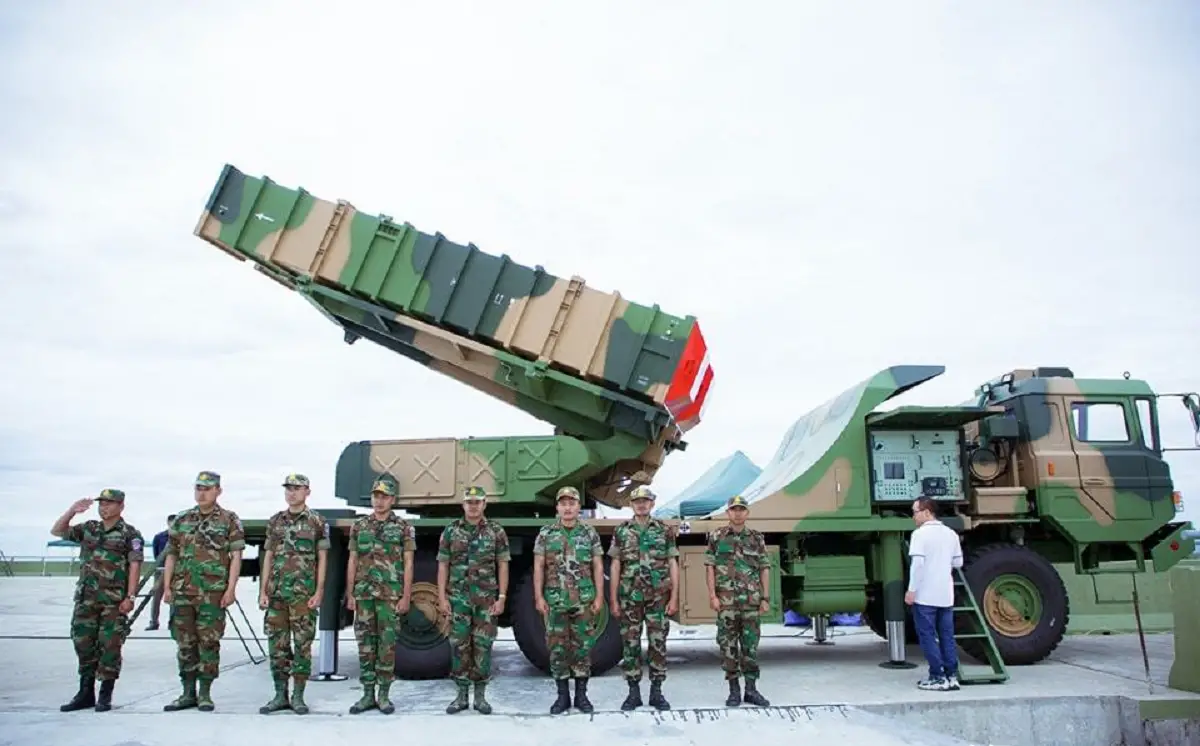The Cambodian Armed Forces took delivery of the KS-1C medium and long-range air defense system from China. This event, which took place on September 15, marks a significant step forward in Cambodia’s efforts to bolster its national defense capabilities. CKHQ reported that the KS-1C air defense system is part of China’s Kaishan” series, a line of air defense missile systems developed as an improved foreign-trade version of the Hongqi-12 (HQ-12) air defense missile system. This series of air defense systems has been exported to several countries, including Myanmar, Turkmenistan, Thailand, and now Cambodia. The Thai Air Force’s 4th Wing has also recently displayed equipment equipped with the Chinese-exported KS-1CM medium and long-range air defense system, underlining the growing popularity of this system in the region. The introduction of the KS-1C air defense system into Cambodia’s military arsenal marks a significant enhancement of the nation’s defense capabilities.

One of the most notable features of the KS-1C system is its utilization of phased-array radar technology. This marks a significant advancement in Chinese air defense systems, with the HQ-12 being the first such system to incorporate this radar technology. A typical KS-1C battery includes one passive phased-array radar (PPAR) panel, four launchers equipped with two missiles each, and 16 additional missiles on reload trucks, along with command-and-control stations and generator units. The initial KS-1 variant employed the SJ-212 engagement radar, derived from the Russian 30N6E1, with the capability to track up to 50 targets at a range of up to 27 kilometers. The subsequent KS-1A variant introduced two radar options: the HT-233 with a range of 50 kilometers and the H-200 multifunction radar with a range of 70 kilometers. The KS-1C retains the H-200 radar from the KS-1A but replaces rail launchers with canister-launched missiles. In terms of performance, the KS-1C can be considered a rough equivalent of the American MIM-23 Hawk, which served as the precursor to the Patriot missile system.

While the original KS-1 system may have become outdated over time, the HQ-12 (KS-1A) represents a more reliable and capable platform, primarily designed for the interception of aircraft, UAVs, and helicopters. Additionally, it can function as a missile defense platform, engaging ballistic and cruise missiles traveling at speeds exceeding Mach 3. Developed by the China Aerospace Science and Industry Corporation (CASIC), the KS-1C boasts an increased range, extending to 70 kilometers from the previous 50 kilometers, and a higher engagement altitude, now reaching 27 kilometers, up from 24 kilometers. The Cambodian Army’s KS-1C launchers are mounted on Chinese-made 6×6 trucks. One of the key elements of the Chinese SAM system is the H-200 phased-array engagement radar, which possesses a remarkable detection range of up to 120 kilometers. At the time of its development, the H-200 was a groundbreaking technology in Chinese air defense radar systems, bearing similarities in display and operation to the American Patriot AN/MPQ-53 system.












